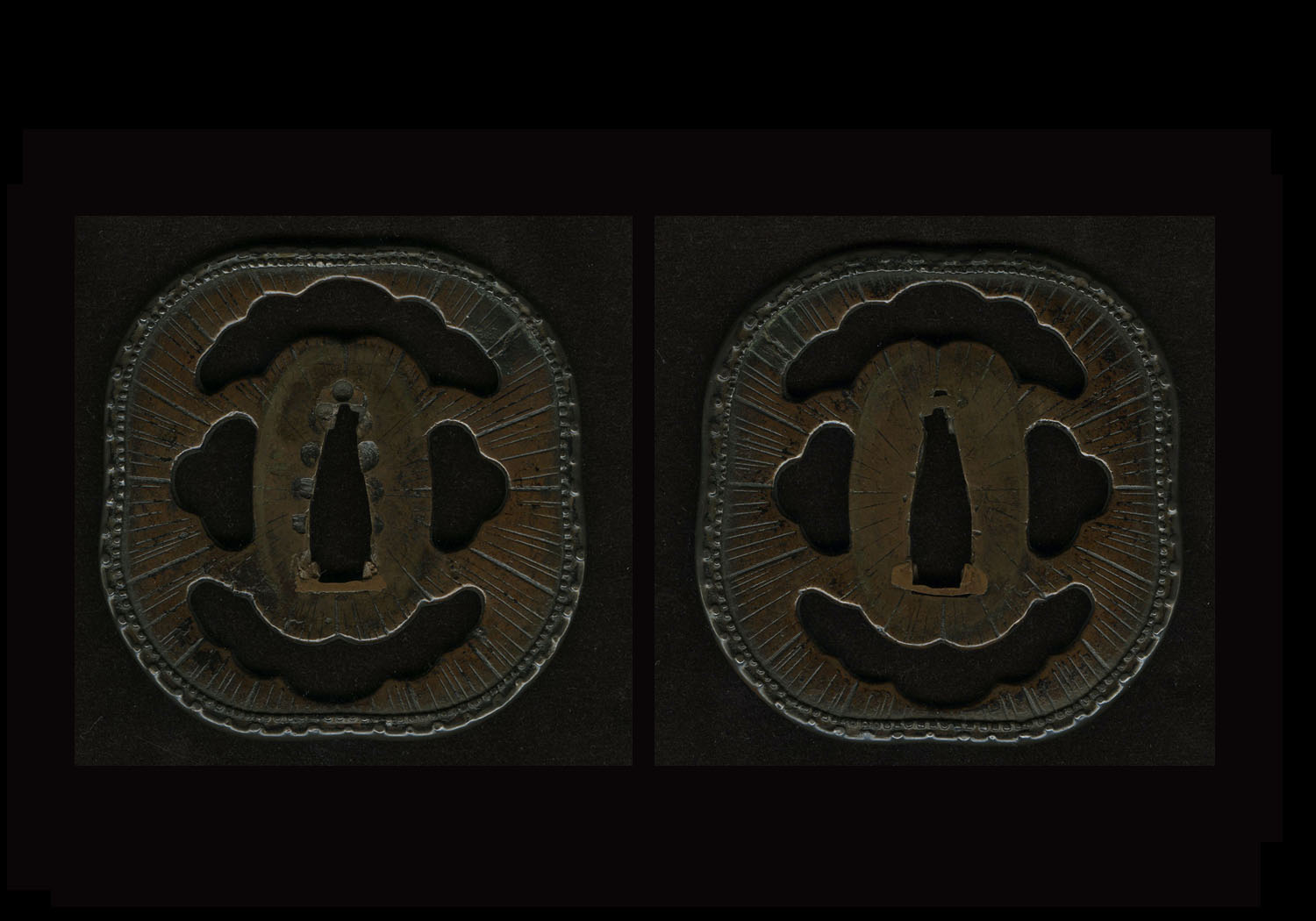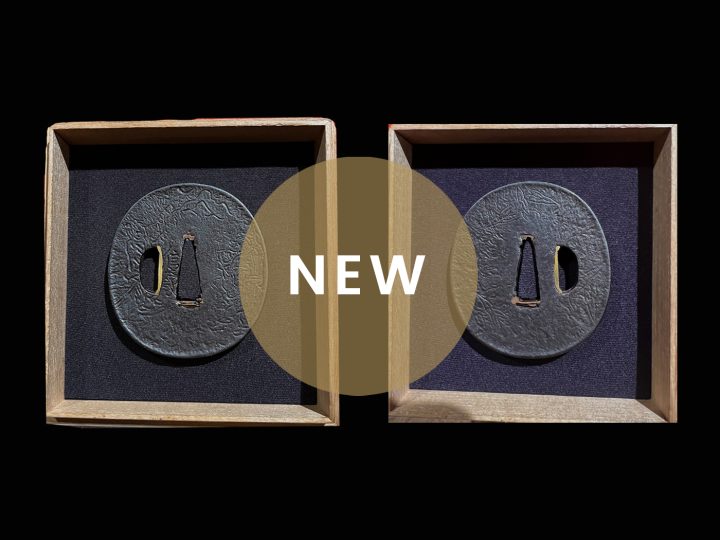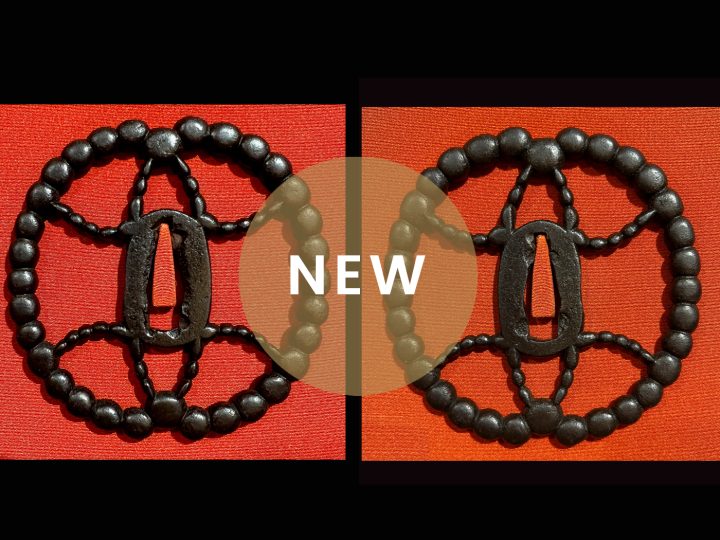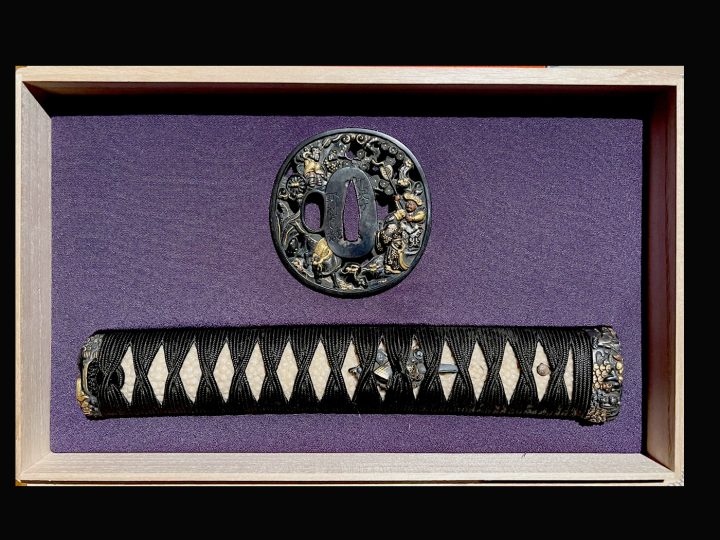
Designated Jûyô Tôsôgu at the 61st Shinsa of 20 October, the 27th year of Heisei (2015)
Tenchi-Matsu Sukashi (open work of pine trees); Mumei, Hikozô [彦三].
Measurements: height:7.2 cent.; width: 7.1 cent.; thickness at mimi: 0.5 cent.
Features: Kawari-nadekaku-gata, suaka with an urushi (lacquered) ground, ô-sukashi, Amida-yasuri, Odawara-fukurin and two hitsu-ana.
Period: Beginning of the Edo Period.
Explanation: The Hirata [平田] family of Higo was part of the Shôami School [正阿弥系], and the founder of the Hirata School, first generation Hikozô, was retained by Hosokawa Sansai [細川三斎] (Tadaoki [忠興], 1564-1645) in Kyoto. When the Hosokawa family was transferred to Kumamoto, Hikozô went along with them, and he died in that area during the 12th year of Kanei (1635). From his school, there was established the four great schools of Higo kinkô with the appearance in succession of Shimizu Jingo [志水葚五] (a nephew) and Nishigaki Kanshirô [西垣勘四郎] along with the Owari School Hayashi Matashichi [林又七]. Artistically, they took over a large number of the Shôami School traditions, and although there are simple iron ground works, the majority of works are in such colored metals as yamagane, shinchû and shakudô. Of course, they did inlays, and they also used Amida-yasuri and okina-yasuri, creating works overflowing with elegance and the addition of decorative features.
As for this work, it has a suaka ground with Amida-yasuri carved into the surface of the base metal. While slight, there are places where traces of black lacquer can be seen. The tone of the tsuba’s color has exquisite variations, which is characteristic of the deeply refined taste of his base metal. There are large open work pine trees at the top and bottom of the tsuba. In addition, there is a shakudô Odawara-fukurin that matches the surface suaka very intimately. The elegance of the rustic simplicity (wabi) and the patina (sabi) is extremely high, and Hikozô’s true merit is fully displayed in the workmanship shown in this piece.





